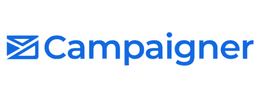

- Sale: Buy now and get 50% off 3 months
- Track success with real-time reporting
- Advanced email marketing automation
- 100+ mobile optimized email templates






Streamline your sales processes with a top-rated CRM software solution:
Finding an Email Newsletter Marketing Platform That Gets the Message
Email newsletters are a great way to boost sales without spending a lot on marketing. When someone signs up for your newsletter, you know they’re a serious customer. What’s more, McKinsey & Company proved to us that email marketing is 40x times more effective than the 2 biggest social media platforms, Facebook and Twitter. Even more than the emails themselves, email newsletters build a relationship with your customers, enhancing your reputation and building through a more personal stream of conversation than a generic ad campaign.
In other words, an e-newsletter is a good idea for your branding and helps your marketing efforts all round. So, which service should you choose to create a newsletter for your audience? Here are a few questions to ask when narrowing down the options.
Question #1: How easy is it to make a newsletter?
Before you can even start thinking about sending out an email newsletter, you’ll need to make a newsletter. Fortunately, this sounds a lot trickier than it actually is. Great newsletter creators offer you a few options when it comes to building and presenting your newsletter layout, including:
- Create a newsletter layout from scratch
- Build using prefab email newsletter templates
- Import a ready-made newsletter in HTML
Make sure the service you choose has good tools for creating your perfect email newsletter, including a drag-and-drop editor for designing, an image library for brightening up your pages, and a good file cabinet that lets you store and easily access frequently-used items such as your company logo. It’s also a good idea to check that the service has an easy-to-use user interface.
Question #2: Does it include testing?
There are 2 major areas you need to test your newsletter: spam-like content and success rates. Testing your email newsletter for spammy content or keywords is essential for the success of your marketing campaign. After all, you might be really enthusiastic about a certain topic or article. But the spam filters may easily mistake your copious exclamation points or frequent usage of the word “fab” as mere spam fodder and feed their folders accordingly, i.e., if not carefully checked, your well-intentioned newsletters may just end up in the spam folder and never see the light of day.
Once you create a newsletter and send it out, you need to be able to test its rate of success. This requires careful tracking of each message and campaign to measure the level of success (or failure, it happens). Good newsletter platforms will provide you with important data such as open rates, click-rate data, statistics, and other vital information. A/B testing is key for marketing success. More advanced testing called multivariate testing (a test that uses more than one variation of a particular campaign to determine which version is the most successful) gives you even more data to work with. Based on this information, you can then alter your newsletters and campaign style to become even more successful with (and relevant to) your subscribers. Analytics is also important to determine who has opted out of the newsletters you are sending. Aside from being a red flag for the bots, you don’t want to be a nuisance sending out newsletters to people who aren’t interested.
Question #3: Does the software provide automated responses?
So, you’ve created a winning email newsletter. You’ve checked it for red flags, and you’ve sent it out to your adoring fans. What’s next? Well, that’s really up to you, or at least it is according to the better newsletter creators. This is because the top brands will allow you to customize your autoresponders to fit various occasions and actions. For example, you can send out a thank you email for a recent purchase, warm wishes for a birthday, or a friendly discount on your customer’s membership anniversary. Customization is key, but automation is the grease that ensures that key will always turn when you want it to.
You want to find a newsletter creator that allows you to build triggers (IFTTT style). When Thing 1 happens, automatically, Reaction 1 follows. For example, when your customer makes a purchase, a thank you email is sent out. Or, if someone hasn’t opened the newsletter in a while, a different type of email might be more appropriate (a discount, for example). The idea is to be able to respond appropriately regardless of the circumstances and automatically to provide the most timely response possible.
Email Newsletter Pricing, The Spectrum
The pricing definitely varies depending on how involved you want the service to be. For example, if you need a service that will create a newsletter layout for you, take care of all the sending, responding, and analytics, you can expect to pay extra for that. Meanwhile, if you already know how to make a newsletter or aren’t interested in all the bells and whistles, you can save a bit on postage. Prices really range dramatically, starting at roughly $20 a month and going up to $165 or more, depending on the services and features included.
Email Newsletter Software
Email newsletters continue to be powerful tools that businesses use to create and maintain healthy relationships with their customers. Choosing the right platform can make or break this whole experience. Be sure to look for reputable names like Constant Contact, GoDaddy, and SendinBlue. But also read email newsletter creator reviews to get the most for your money.
Our Top 3 Picks
- 1

 Exceptional9.8The best email marketing platform for less
Exceptional9.8The best email marketing platform for less- Price - From $12
- Free Trial - First month free
- Email automation - Plan marketing calendar
The best email marketing platform for lessRead Constant Contact ReviewConstant Contact is one of the 3 biggest email marketing services in the industry. It has affordable plans starting at just $20 a month. With this reasonable pricing comes a whole slew of useful features, including customizable and branded templates, Ecommerce options, automated abandoned cart email for Shopify, and WooCommerce integration.
Constant Contact will let you import your contact list for fast and easy email campaigns, and it’s even got list building tools and list segmentation to help you get started. This service incorporates Facebook, Instagram, and Google ads into its mix, and Constant Contact has a useful marketing calendar for keeping it all straight. And these are just the standard features. If you want to upgrade, you’ll get a wide variety of even more advanced features like surveys, dynamic content, RSVP, and automated email behavioral series. Check out what Constant Contact can do for your email marketing campaign today.
Constant Contact Pros & Cons
PROS
Extremely affordable pricing plansEasy drag-and-drop editingEmail templates and automation even with basic planCONS
Editing user records is cumbersomePremium plan could use more advanced automation tools - 2

 Excellent9.4Last email marketing tool you’ll ever need
Excellent9.4Last email marketing tool you’ll ever need- Price - Forever free plan, $800 for business plan
- Free Trial - Forever free plan
- Email automation - Scheduled emails, triggers, workflows
Last email marketing tool you’ll ever needRead HubSpot ReviewIf you needed to pick one brand to represent professional digital marketing, hands down, it would be Hubspot. It's not just that the company manages all aspects of marketing, including lead generation, ad management, and email, but Hubspot does it all with style.
Hubspot really pulls out all the stops when it comes to email marketing. You’ll enjoy the attractive email templates that are responsive and totally customizable. The drag-and-drop editor is even more intuitive than the ones you are used to using, and it’s got a lot more functionality and depth to it as well, including brand-matching color palettes, call to action buttons, and images.
Hubspot has incredibly detailed analytics and reporting. It includes data that many other marketing firms leave out, like what device is being used and which links are the hottest. And Hubspot even goes big data on you, pulling info from all over the web to help businesses craft the perfect email messaging to target their audiences for maximum success.
HubSpot Pros & Cons
PROS
In-depth analytics and reportingData-driven email design optionsForever free planCONS
Huge price jump from free to paid-for plansMany features only available with paid plan - 3

 Very good8.5Send 300 emails a day for free
Very good8.5Send 300 emails a day for free- Price - Start for free and get 300 emails per day
- Free Trial - Yes
- Email automation - Easy-to-use email marketing templates
Send 300 emails a day for freeRead Brevo ReviewSedinblue is an affordable email marketing tool, especially considering the number of features you get. With the free plan you can send 300 emails a day, and 4000 emails a day when you updgrade to paid plans starting at $25 per month. Sendinblue makes it easy to create, optimize and send email campaigns, and combines SMS reminders with follow-up reminders for transactions.
Brevo Pros & Cons
PROS
Free plan includes 300 daily emailsComes with SMS capabilitiesEasy email campaign creation and analysisCONS
May experience delays in sending and receiving emailsUser experience needs improvement for beginners



